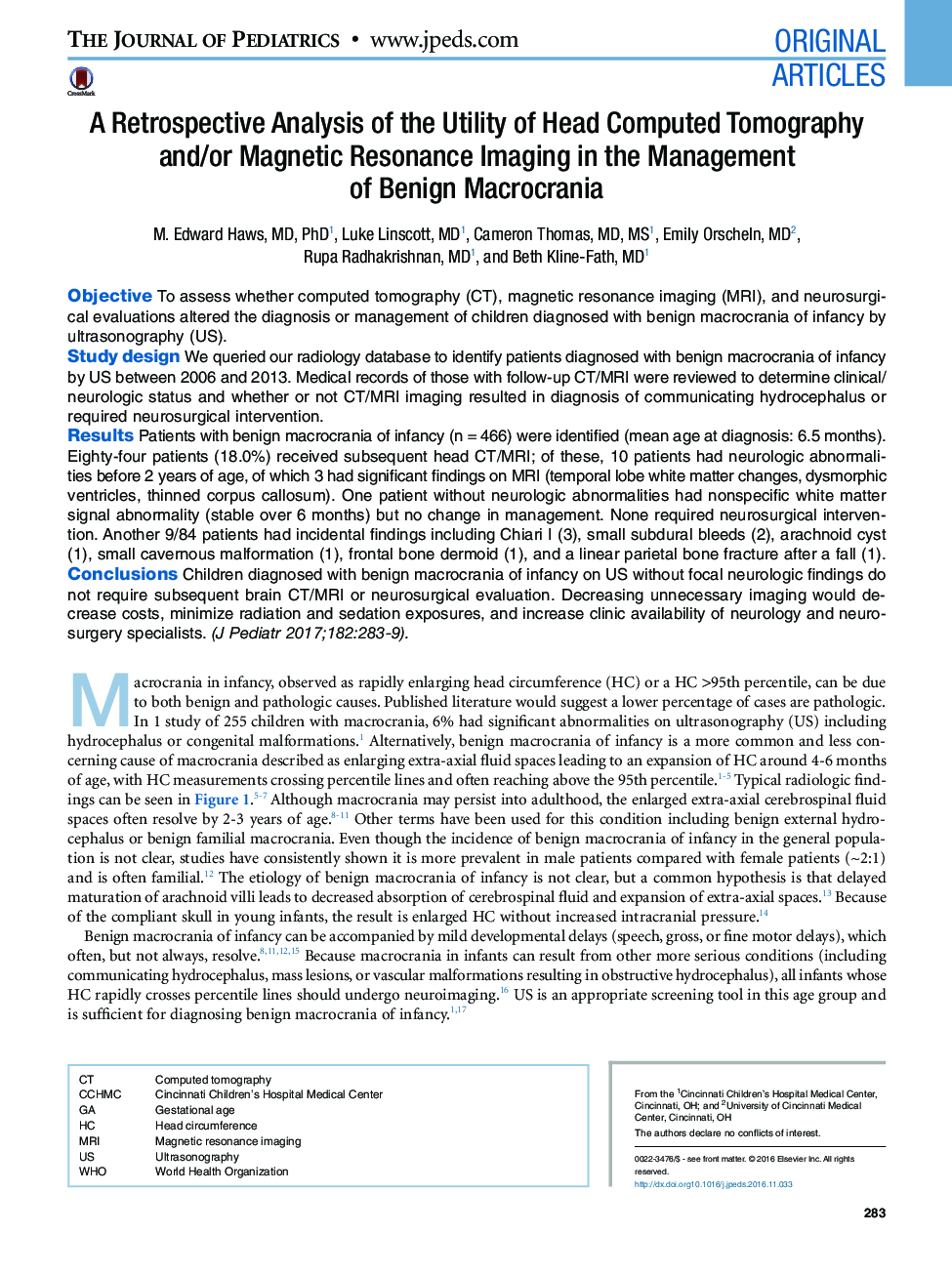| Article ID | Journal | Published Year | Pages | File Type |
|---|---|---|---|---|
| 5719687 | The Journal of Pediatrics | 2017 | 8 Pages |
ObjectiveTo assess whether computed tomography (CT), magnetic resonance imaging (MRI), and neurosurgical evaluations altered the diagnosis or management of children diagnosed with benign macrocrania of infancy by ultrasonography (US).Study designWe queried our radiology database to identify patients diagnosed with benign macrocrania of infancy by US between 2006 and 2013. Medical records of those with follow-up CT/MRI were reviewed to determine clinical/neurologic status and whether or not CT/MRI imaging resulted in diagnosis of communicating hydrocephalus or required neurosurgical intervention.ResultsPatients with benign macrocrania of infancy (nâ=â466) were identified (mean age at diagnosis: 6.5 months). Eighty-four patients (18.0%) received subsequent head CT/MRI; of these, 10 patients had neurologic abnormalities before 2 years of age, of which 3 had significant findings on MRI (temporal lobe white matter changes, dysmorphic ventricles, thinned corpus callosum). One patient without neurologic abnormalities had nonspecific white matter signal abnormality (stable over 6 months) but no change in management. None required neurosurgical intervention. Another 9/84 patients had incidental findings including Chiari I (3), small subdural bleeds (2), arachnoid cyst (1), small cavernous malformation (1), frontal bone dermoid (1), and a linear parietal bone fracture after a fall (1).ConclusionsChildren diagnosed with benign macrocrania of infancy on US without focal neurologic findings do not require subsequent brain CT/MRI or neurosurgical evaluation. Decreasing unnecessary imaging would decrease costs, minimize radiation and sedation exposures, and increase clinic availability of neurology and neurosurgery specialists.
